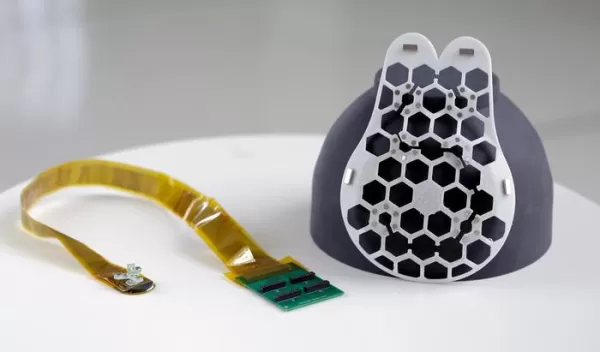
Wearable ultrasound scanner could detect breast cancer earlier
When breast cancer is diagnosed in the earliest stages, the survival rate is nearly 100%. However, for tumors detected in later stages, that rate drops to around 25%.
In hopes of improving the overall survival rate for breast cancer patients, MIT researchers have designed a wearable ultrasound device that could allow people to detect tumors when they are still in early stages. It could be valuable for patients at high risk of developing breast cancer in between routine mammograms.
The U.S. National Science Foundation-supported device is a flexible patch that can be attached to a bra, allowing the wearer to move an ultrasound tracker along the patch and image the breast tissue from different angles. In the new study, the researchers showed that they could obtain ultrasound images with resolution comparable to that of the ultrasound probes used in medical imaging centers.
"We changed the form factor of the ultrasound technology so that it can be used in your home. It's portable and easy to use, and provides real-time, user-friendly monitoring of breast tissue," says Canan Dagdeviren, senior author of the study, which appears in Science Advances.
Breast tumors that develop in between regularly scheduled mammograms — known as interval cancers — account for 20% to 30% of all breast cancer cases, and these tumors tend to be more aggressive than those found during routine scans.
"My goal is to target the people who are most likely to develop interval cancer," says Dagdeviren, whose research group specializes in developing wearable electronic devices that conform to the body. "With more frequent screening, our goal to increase the survival rate to up to 98%."
Dagdeviren designed a miniaturized ultrasound scanner that could allow the user to perform imaging at any time. This scanner is based on the same kind of ultrasound technology used in medical imaging centers but incorporates a novel piezoelectric material.
